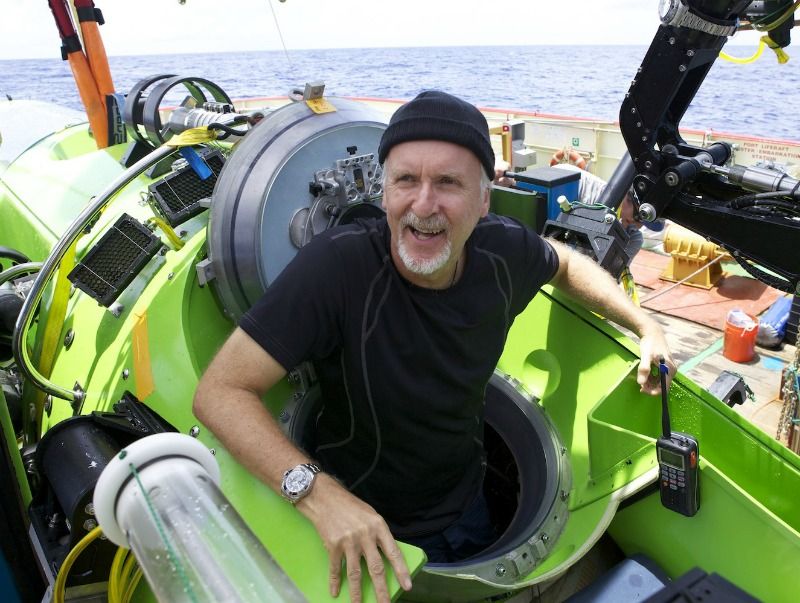
James Cameron Gives Deep Sea Sub to Science

One year after James Cameron made a solo dive to the deepest spot in the world's oceans, he is donating his submersible, the Deepsea Challenger, to science. Cameron is giving the sub to the Woods Hole Oceanographic Institution (WHOI) to help improve future submersibles and facilitate the exploration of the deep ocean, according to a release from the institution.
"The seven years we spent designing and building the Deepsea Challenger were dedicated to expanding the options available to deep-ocean researchers," Cameron said in the statement. "Our sub is a scientific proof-of-concept, and our partnership with the Woods Hole Oceanographic Institution is a way to provide the technology we developed to the oceanographic community."
The Deepsea Challenger contains several unique features that allowed it to withstand the crushing pressures at the Challenger Deep ― the deepest spot in the world's oceans, at approximately 36,000 feet (11 kilometers) beneath the surface of the Pacific. Among those special features are unique approaches to flotation, battery design and energy storage, as well as innovative ways to gather imagery and samples from the seafloor, according to the WHOI statement.
Examination of samples and video collected by the Deepsea Challenger one year ago has revealed several likely new species, such as a sea cucumber seen at the Challenger Deep. Analysis by Natalya Gallo, a doctoral researcher at the Scripps Institution of Oceanography at the University of California, San Diego, also turned up a second previously unknown species of squid worm, Gallo told OurAmazingPlanet in February. These wormy animals are several inches long and live in the mid-water, above the seafloor, she said.
Cameron's dive also turned up microbial mats — strange-looking, filament-like clumps of microorganisms — on the seafloor. Researchers have speculated that a similar setup could have sparked the chemical steps that led to the development of life on Earth. The dive also revealed the presence of giant single-celled amoebas called xenophyophores — bizarre creatures that are among the biggest cells known to humans — near the Challenger Deep.
WHOI said it envisions a whole range of uses for the Deepsea Challenger's innovations. For example, its lighting and camera systems will be used on one of WHOI's existing vehicles to explore trenches in the Pacific and Atlantic oceans in the next two years, according to the release.
"The technological solutions [Cameron's team] developed for the Deepsea Challenger system can be incorporated into other human-occupied and robotic vehicles, especially those used for deep-sea research," said Susan Avery, WHOI president, in the statement. "We plan to make that happen."
Sign up for the Live Science daily newsletter now
Get the world’s most fascinating discoveries delivered straight to your inbox.
"Jim's record-breaking dive was inspirational and helped shine a spotlight on the importance of the deep ocean," Avery said. "We face many challenges in our relationship with the ocean, so there is heightened urgency to implement innovative approaches. Partnerships such as this one represent a new paradigm and will accelerate the progress of ocean science and technology development."
Email Douglas Main or follow him @Douglas_Main. Follow us @OAPlanet, Facebook or Google+. Original article on LiveScience's OurAmazingPlanet.













